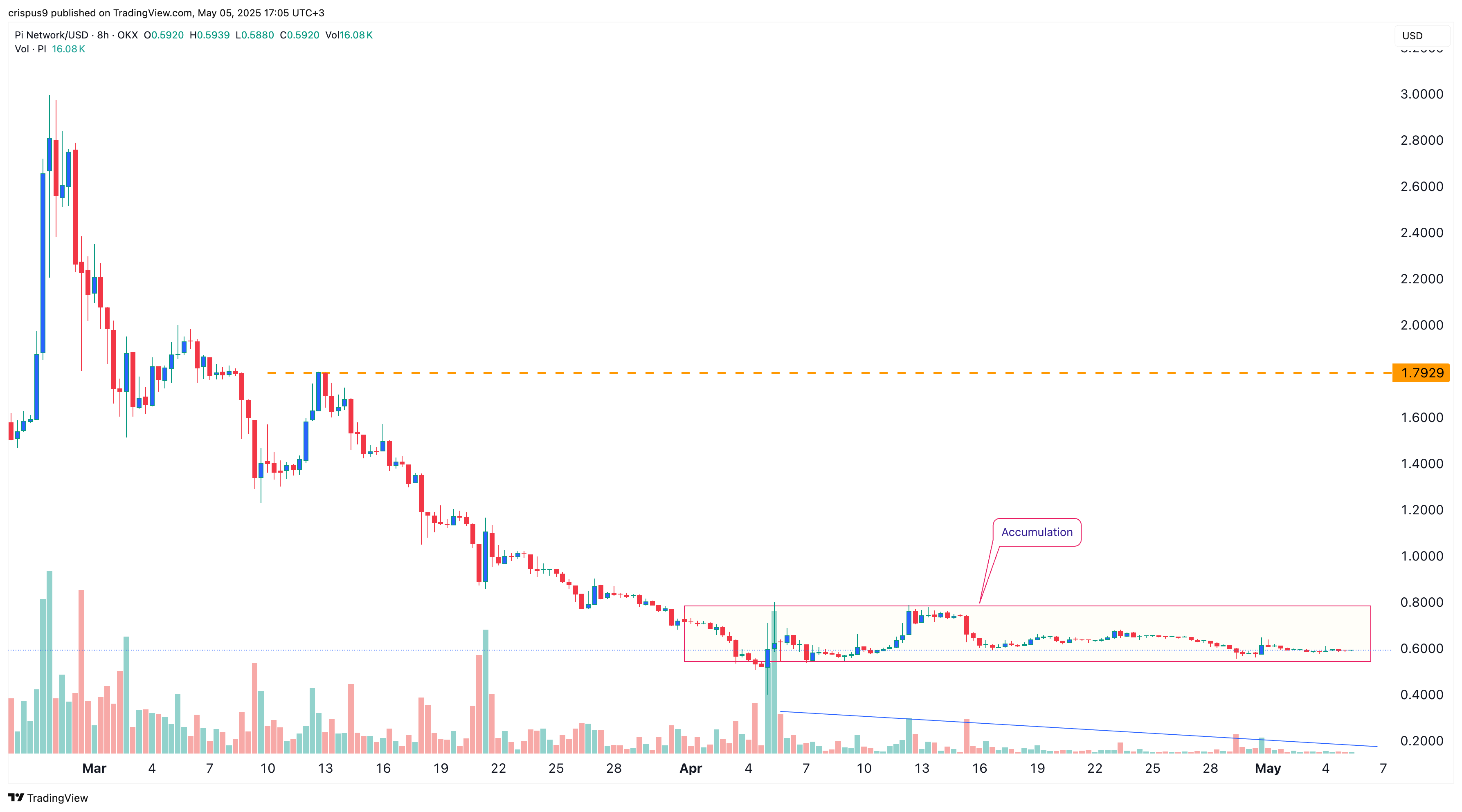If the Pi Network were any more still, you’d stick a ‘Do Not Disturb’ sign on it and tiptoe away. Since early April, the price has been loitering like a student outside exam results day—nervous, uncertain, and easily distracted by shiny things elsewhere.
Currently, Pi Coin (PI) is exchanging hands at $0.60. No, that’s not a typo—it’s actually only one-fifth of what it used to be when the coin flirted shamelessly with the $3 mark at its all-time high. In the mystical land of market caps, that means over $9 billion has vanished into the realm where lost socks and the credibility of fad diets go, whittling Pi’s capital from a plump $13 billion to a slightly anaemic $4 billion.
Why, you ask? Because investor excitement has fizzled out like a cheap firework. According to CoinGecko—the people who count these things so you don’t have to—daily trading volume giddied up at $800 million just after mainnet launch, and has now curled up into a sleepy ball at a paltry $42 million.
But wait, there’s more! Pi Network’s supply keeps rising like bread you left near a radiator. PiScan whispers that 231 million tokens will pop out this month, with 222 million more joining the party in June. Stretch it out over the next year, and there’s a whole bakery: 1.4 billion tokens, notionally worth $853 million, ready to hit the shelves. 🍞 (Sorry, gluten-free friends.)
Usually, rising supply with dwindling demand is the plot twist where asset prices suddenly realize gravity exists. Unless, of course, something dramatic happens, like a key exchange listing, or Elvis returns and buys Pi with dogecoin, or similar market-moving wizardry.
Meanwhile, Pi Network’s ecosystem apps haven’t exactly set the Discworld on fire. Over in the rest of cryptoland, everyone’s still frolicking on the likes of Ethereum (ETH) and Solana (SOL), occasionally checking Pi’s pulse out of courtesy.
And Now for a Bit of Classic Wyckoffian Drama…

If you stare long enough at the Pi Coin’s eight-hour chart, you’ll notice the price is as flat as Ankh-Morpork after a visit from the Patrician. This sideways shuffling is properly known as the ‘accumulation phase’ by those who like fancy words. According to Wyckoff Theory (which has been around longer than some family feuds), any asset’s price moves through four phases: accumulation (huddling quietly), markup (leaping up on a sugar rush), distribution (suddenly everyone’s a seller), and markdown (last call for the price elevator going down).
So, what phase are we in? The one where everyone’s pretending nothing is happening—accumulation. If tradition and Wyckoff’s whiskery wisdom prevail, the next stop is ‘markup’—the part where people start worrying they’ll miss out, so they pile in. All it takes is a spark, like a shiny exchange listing.
Lucky for Pi, the rumor-mill suggests that HTX (the exchange with ties to Justin Sun, who collects tokens like Discworld wizards collect improbable hats) is on the verge of finally listing Pi. 🤞
And if recent history has a sense of humor, listing on a major exchange can send prices skyward. Remember Orca (ORCA)? Upbit gave it a home, and it promptly gained 200%, leaving more than a few speculators hyperventilating into paper bags. Pi is more popular, so strap in—things could get interesting.
For anyone keeping score, the initial target for Pi is the magical $1 mark that haunts every trader’s dreams, with $1.80 (the March 13 high) as the enchanted castle in the distance. Whether Pi gets there, or just goes around the roundabout for a few more months, is anyone’s guess. 🦄
Read More
- Gold Rate Forecast
- tWitch’s Legacy Sparks Family Feud: Mom vs. Widow in Explosive Claims
- OM PREDICTION. OM cryptocurrency
- 25+ Ways to Earn Free Crypto
- Oblivion Remastered: The Ultimate Race Guide & Tier List
- Solo Leveling Season 3: What You NEED to Know!
- The Monkey – REVIEW
- Rachel Zegler Claps Back at Critics While Ignoring Snow White Controversies!
- Oblivion Remastered: Get Volendrung NOW (Easy Location Guide!)
- Oblivion Remastered: Leveling System, Explained
2025-05-05 17:54